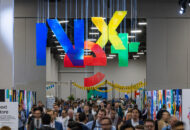Software Asset Management (SAM) is very costly, but ignoring it can be far more expensive. There are two major reasons to invest in SAM, software licensing on one hand and general management on the other.
Both require special software which runs in the clients and the servers which is capable of detecting full details of the installed software in each and every machine. This agent software must be dynamic to respond to any changes that are made at any time. In some cases these agents may have the capability to add, delete and upgrade the installed software.
The agents in the clients as well as any application and data servers (possibly communication nodes as well) are connected to a special management server which can thus gather information from and control all nodes in the network. Unfortunately while it is relatively easy to manage the major elements, in particular the .EXE files in PC clients, it is far more complex to make sure that all the associated elements, the DLLs for instance, are the correct, legal versions. Thus the SAM agents available range from quite simple products to the extremely complex ones which normally form part of the major corporate management suites, i.e. Tivoli, etc. There are a few free products such as the one given away by BSA, but these must not be confused with full function products. I am not aware of any outstanding products in this market which offer value for money and extensive functionality; is there an OSS offering I wonder?
A key feature of a SAM system will be the database and the tools employed to analyse the data collected by the agents and to integrate with other systems such as Help-desks. It was common in earlier years for mainframe operations staff to use analysis tools such as SAS to help with management; surely the same concept could be employed in PC SAM systems, particularly for large scale sites.
SAM is expensive. A large site in the UK, with a lot of graphics applications, has recently invested over _3 million on SAM to put some of its house in order, and has an annual budget of _500,000 to maintain and extend it. Such expenditure is not needed by every institution, but it won’t be insignificant. Why then should a company spend so much? What are the benefits? As suggested above there are two reasons. The first is to ensure that the frightening complexity of modern systems is under control and that systems will function correctly. The second is the need to be legal and to avoid punitive fines for software theft. Any company using software without paying the due license fees is in fact stealing. It was to help monitor this problem that BSA was established. I have heard complaints of "bullying" and greed levelled at Microsoft and others, but this is not justifiable. They are entitled to get payment for their products as is any business; arguments that they charge far too much may well be justified, but that is no excuse for stealing. Pay up or find an alternative!
The problem facing us then is to calculate what is legally due in license fees, which is where SAM comes in. It is immensely complex, greatly exaggerated by the fact that different suppliers use different pricing models, and it is not unknown for those to change with time. This creates a big problem because most corporate software currently in use is an upgrade to some older software. Thus the legitimacy of both the latest licence and any past agreements must be valid. Do you have the proof of purchase of that older software.< BR>
Martin Healey, pioneer development Intel-based computers en c/s-architecture. Director of a number of IT specialist companies and an Emeritus Professor of the University of Wales.








